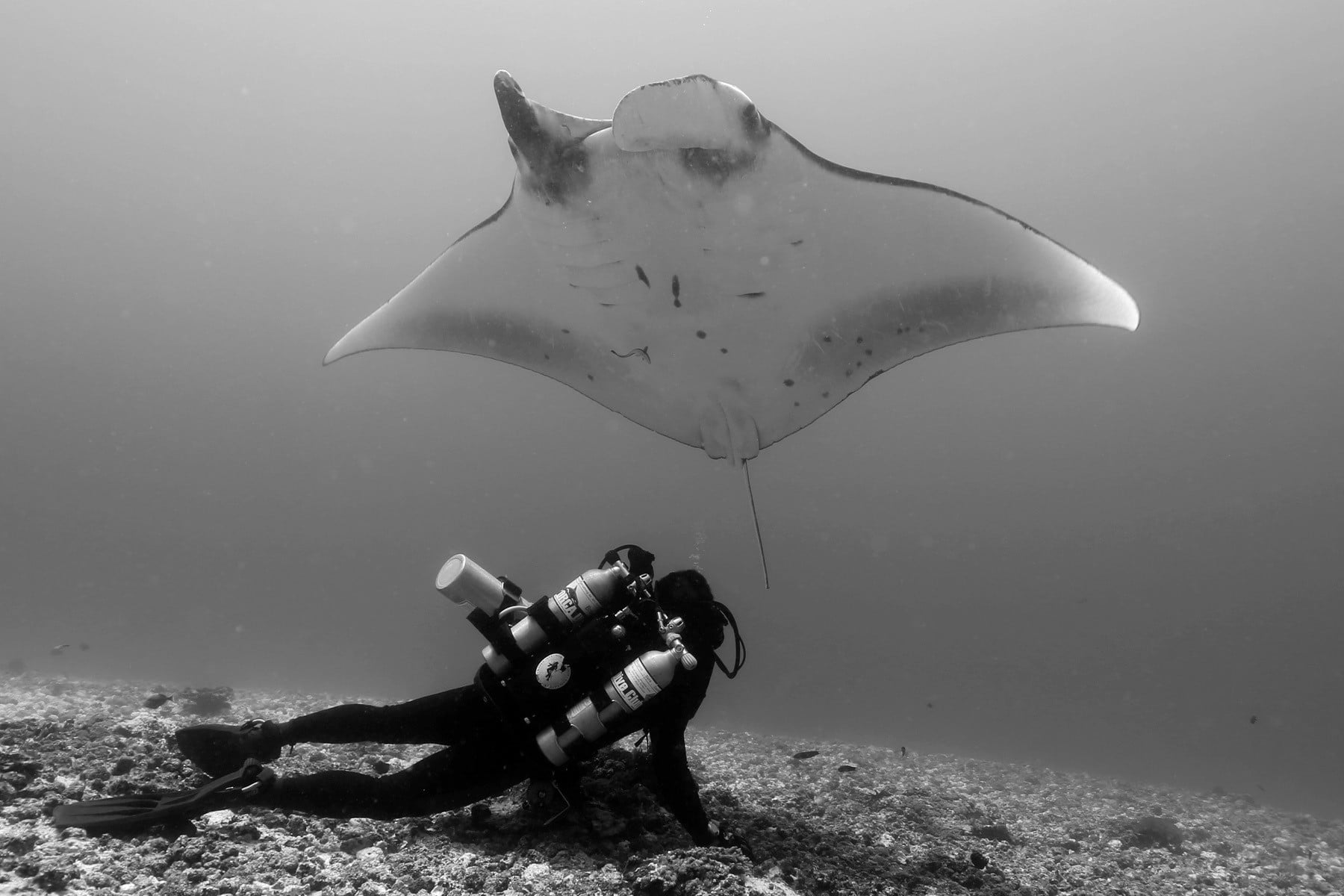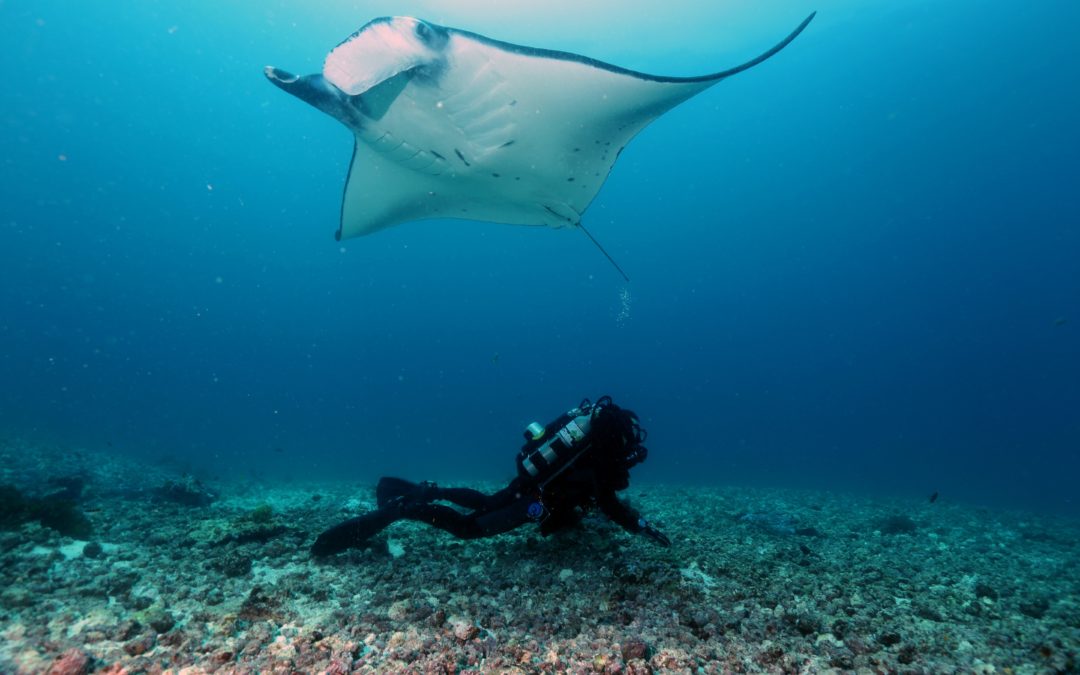The Manta ray is the largest ray, and one of the largest fish in the world. It has fins that can reach a wingspan of up to 7 metres, allowing it to effortlessly “slide” into flowing water. Its immense size and grace are enough to offer you a unique show and a fascinating experience.
One of the many qualities of the Manta ray is its intelligence, in fact, the brain of the Manta is disproportionate to the size of its body, the weight of their brain is comparable to a mammal more than a fish. Thanks to this intelligence, she becomes more sociable and curious, and it is very often possible that she approaches divers. An encounter with a Manta ray is an incredible experience and very difficult to describe, but when you find yourself in front of this animal you will undoubtedly understand this feeling.

Despite the popularity of the Manta ray among divers, very little information exists on their biology and ecology of this charismatic ray; until December 2009, the Oceanic Manta (Manta Birostris) and the Reef Manta (Manta Alfredi) were considered as one and the same species.
There are also many misconceptions about Manta rays, one of the most common being that it has a stinger on its tail as does the Stingray rays, which means “stingray”. Manta rays have no stings on their tails and are harmless. The animal feeds only on tiny planktonic animals and uses its speed and size to help them avoid deadly attacks from the few natural predators that depend on it.
In addition to misconceptions, very few people know or understand the permanent threat that Manta rays face worldwide. Year after year, thousands of Manta rays and their close relatives, the Mobula rays, are killed and removed from the oceans to recover a small part of their body: their gills, made of cartilage that allows them to filter their food and oxygen. The latter are used in the Chinese medical trade market, they claim that it can treat health problems such as asthma, rashes, chickenpox or even cancer. However, there is no scientific evidence to support these claims.
Manta rays grow slowly, live long and reproduce very slowly, giving birth to only one offspring after a year-to-year pregnancy from 2 to 5 years. These factors make Manta extremely vulnerable to exploitation, as they are not able to quickly replace their previous generation. Fishing for these skates can cause a considerable decrease, this has been observed in the Gulf of Mexico and in recent years Indonesia has also been affected by this decline.
There are organizations to better understand and conserve Manta rays, such as “The Manta Trust”.

By organizing diving and snorkeling excursions to the sites where the Mantassont rays are found, this helps to fight poaching by bringing in sensitive people.
At Bali Dive Trek we organize excursions to Manta Point and Manta Bay on Nusa Penida, in Bali. We see the Manta Aldredi and from time to time some Mobula.
In conclusion, to help the Manta:
– Don’t eat Manta gills
– Spread the word and inform others about the near disappearance of the Manta
– Visit www.mantatrust.org to learn more about how to protect these fish

